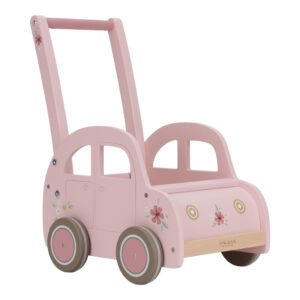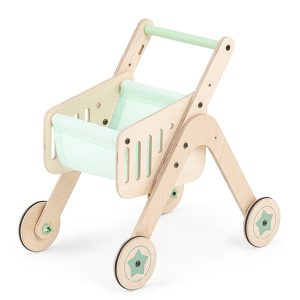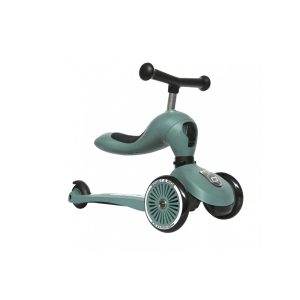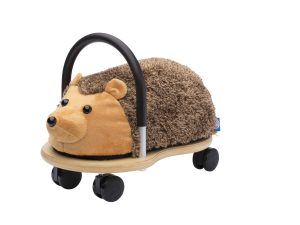How cliche, but true… time flies by. Before you know it, your little one is running around! The first steps are taken between 10-15 months. As a proud parent, you encourage your little one with every step it takes. Do not forget that every child is unique and achieves the various milestones at their own pace. One simply runs faster than the other and that doesn’t matter at all. Do you notice that your child is curious or wants to take steps? Stimulate and guide your little one, but don’t force anything. With a nice walker you’re sure to attract the attention. This offers great support when taking the first steps and develops gross motor skills. A period of a lot of (mis)steps and above all, trying!
-
Little Dutch Push Walker FSC
Sale!

Little Dutch Push Walker FSC
Original price was: €49,95.€32,46Current price is: €32,46. Add to basket -
Mamatoyz Wooden Walker Shopping Cart
Sale!
While stocks last

Mamatoyz Wooden Walker Shopping Cart
Original price was: €63,00.€53,55Current price is: €53,55. Add to basket -
Scoot and Ride Highwaykick 1
Sale!
Scoot and Ride Highwaykick 1
Original price was: €109,99.€91,99Current price is: €91,99. Select options This product has multiple variants. The options may be chosen on the product page -
Wheelybug Plush
Wheelybug Plush
€84,95 Select options This product has multiple variants. The options may be chosen on the product page -
Wheelybug Small (1 to 4 years)
Wheelybug Small (1 to 4 years)
€74,95 Select options This product has multiple variants. The options may be chosen on the product page
Tools on wheels
How cliche, but true… time flies by. Before you know it, your little one is running around! The first steps are taken between 10-15 months. As a proud parent, you encourage your little one with every step it takes. Do not forget that every child is unique and achieves the various milestones at their own pace. One simply runs faster than the other and that doesn’t matter at all. Do you notice that your child is curious or wants to take steps? Stimulate and guide your little one, but don’t force anything. With a nice walker you’re sure to attract the attention. This offers great support when taking the first steps and develops gross motor skills. A period of a lot (mis)steps and above all, trying!
Baby walkers
A baby walker is a seat with a play tray and a frame with wheels underneath. This gives your child the freedom to move around the room when it’s not yet able to walk independently. Your little one should be able to sit up on their own to use it (after about 6 months). The baby walker offers a great solution for your little one to move around the house. Make the house baby-proof and always stay with it when your child races through the room. Before you know it your little speedster will take off immediately. Babies who aren’t walking independently yet, are often inclined to walk with their toes. Don’t let your little one race around in a walker for too long to prevent pointed feet.
(Push) walkers
Get on the cool fire truck or walk around with your own crocowalker. Walkers are available in many different types, colours and designs. The main difference is that your little one sits on top of one and strolls behind the other. We also call the latter a push cart. Your child is ready for the walker when it:
- stands up on its own
- makes sideways steps by only using the hands for support
- takes a few stable steps independently
It’s not possible for your child to use a walker when the points above doesn’t match. Always be there when your little one runs off with the walker. Your child is still working hard to keep itself in balance, so the walker can roll away by accident. Is your wobbly walker still a little insecure? Then these handy tips will offer more resistance.
- Fill the walker with weight (and distribute it well) for more stability
- Tighten the wheels, so the walker won’t easily roll away
- Adjust the push bar to the correct height and position, so your little one doesn’t bumb its feet
Wooden carriages are more stable in addition to the plastic ones. On the other hand, the plastic version is more manoeuvrable.
Take your time
A baby walker with or without acitivity panel, walking scooter or doll pram, are walkers as well. When your little one is done walking (or wobbling), it has something to play with as well. Fine motor skills are also trained, while stacking the blocks. It’s good to take breaks and not spend all day walking around with a baby walker. Otherwise your child learns to rely on the support, instead of walking independently. Motivate walking, but be patient. If your little one still walks barefoot, sturdy shoes give more confidence to take the first steps. Do you want to know more about buying a walker? Please contact baby store Baby Plus. We are happy te help you.








